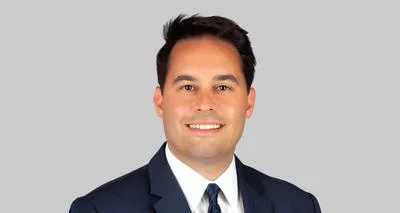Naperville City Council hopefuls Allison Longenbaugh (L) and Rebecca Malotke-Meslin (R) hope to expand Section 8 housing in the city's downtown, if elected. | Facebook
Naperville City Council hopefuls Allison Longenbaugh (L) and Rebecca Malotke-Meslin (R) hope to expand Section 8 housing in the city's downtown, if elected. | Facebook
A slate of Naperville City Council candidates are running on a platform of bringing more low-income, Section 8 apartments to the city's downtown.
Incumbent Patrick Kelly and council hopefuls Allison Longenbaugh, Ashley South and Rebecca Malotke-Meslin-- all Democrats-- are promising, if elected, to use city tax dollars to speed up Section 8 development in the city, arguing that Naperville has enough owner-occupied, single-family homes.
"I fully support efforts to increase (low-income) housing in Naperville, and these initiatives should encourage city development with a purpose," Malotke-Meslin told the Chicago Tribune.
That purpose: have current residents subsidize cheaper rentals for people who want to move into Naperville, but currently cannot afford it.
It's a daunting task that would require building a city-estimated 1,400 new housing units-- the equivalent of eight, 175-unit 15-story Section 8 high-rise apartment buildings-- across six square blocks in the city's downtown, along Fifth Avenue between Sleight St. and Washington St.
That's where the city's few yet-undeveloped land parcels available for apartment building development exist in nearly fully-developed Naperville, pop. 149,104, which has nearly doubled in size since 1990, exhausting its developable land.
Naperville's "5th Avenue Project," which includes 13 city-acquired downtown acres near the Naperville Metra station, has long been eyed for low-income housing by advocates.
According to the U.S. Dept. of Housing and Urban Development (HUD), Section 8 housing has doubled in Naperville since 2009, to 999 units and 2,020 residents from 447 units and 1,020 residents.
The planned expansion would give Naperville nearly as many Section 8 units as Joliet (2,541 units) and more than adjacent Aurora (2,140 units).
The median rent of a Naperville Section 8 housing resident in 2021 was $401.
"Diverse, equitable and inclusive economic practices"
In 2020, the city's Housing Advisory Commission recommended "leveraging publicly-owned land" to force development of more low-income housing in Naperville.
It also backed an "Inclusionary Zoning Ordinance" that would require all Naperville residential development to include low-income units, an idea with broad support among slate members.
"We must continue to work with developers and examine our zoning and existing buildings to see what can be done to increase the (low-income) housing stock." said South, who promises to "help those facing structural discrimination by looking at zoning regulations."
Malotke-Meslin says her top priority is "to establish comprehensive DEI ("diversity, equity and inclusion) systems" and to force the city to "commit to diverse, equitable and inclusive economic practices."
The alternative to downtown high-rises: building apartment buildings in Naperville's residential subdivisions, an idea discussed by Naperville's Fair Housing Commission at a meeting last June.
Commission member Brian Palm said "high density is always the answer" for low-income housing advocates, but lamented that that the low-income residents recruited to live in Naperville will "want an affordable single-family home" rather than an apartment.
Commission member Linda Kuhn said she "would like to preserve residential neighborhoods as they are" and "expressed concerns about mixing large (apartment) buildings within established single-family neighborhoods," according to minutes of the meeting.
Per the city's current low income housing ordinance, to build a Section 8 apartment high rise in a residential, single-family home subdivision would require special city council approval.
Under Section 8, households pay rent equal to 30 percent of their incomes. The federal government pays the remainder of rent or other rental costs. To qualify, an applicant's income must fall below a certain limit.
Section 8 housing income limits for DuPage County are currently $34,068 for a four-person household.
Currently, Naperville has 53,234 households, 13,522 of which are renters, according to the U.S. Census.
Existing Section 8 developments in Naperville include the Martin Ave. Apartments near Edward Hospital, Ogden Manor, on Ogden Ave. and Mill Road across from Naperville North H.S.. and Charles Court, adjacent to Naperville Country Club.
-----
Section 8 units and residents by city in 2021
Naperville had 999 Section 8 units as of Dec. 31, 2021, according to HUD.
Plans to expand the program in the city's downtown would give Naperville nearly as many Section 8 units as Joliet, and more than Aurora.
Naperville Section 8 units and residents, 2009-2021
Largest Existing Naperville Section 8 Developments
Source: U.S. Dept. of Housing and Urban Development "Picture of Subsidized Households"






 Alerts Sign-up
Alerts Sign-up